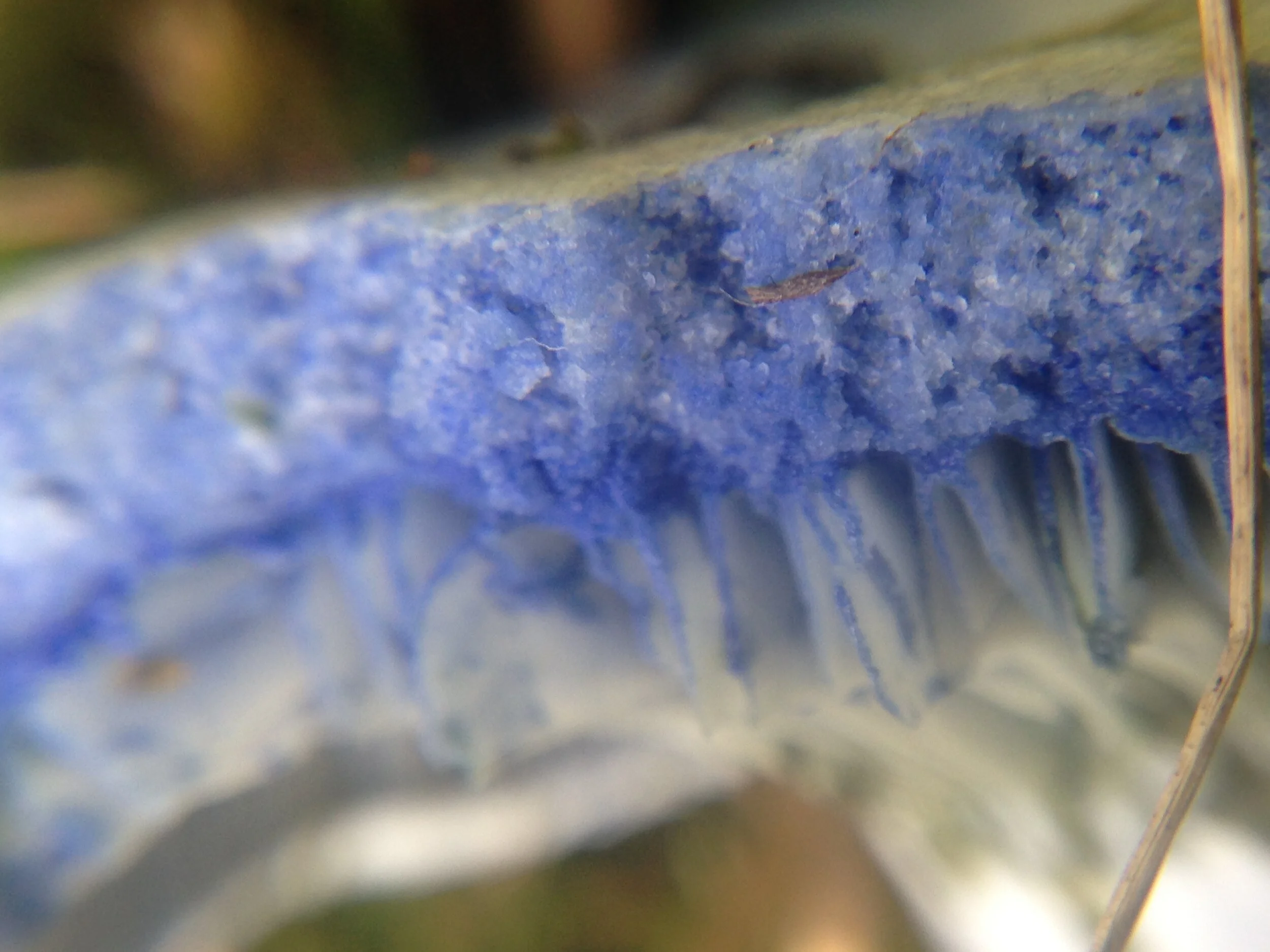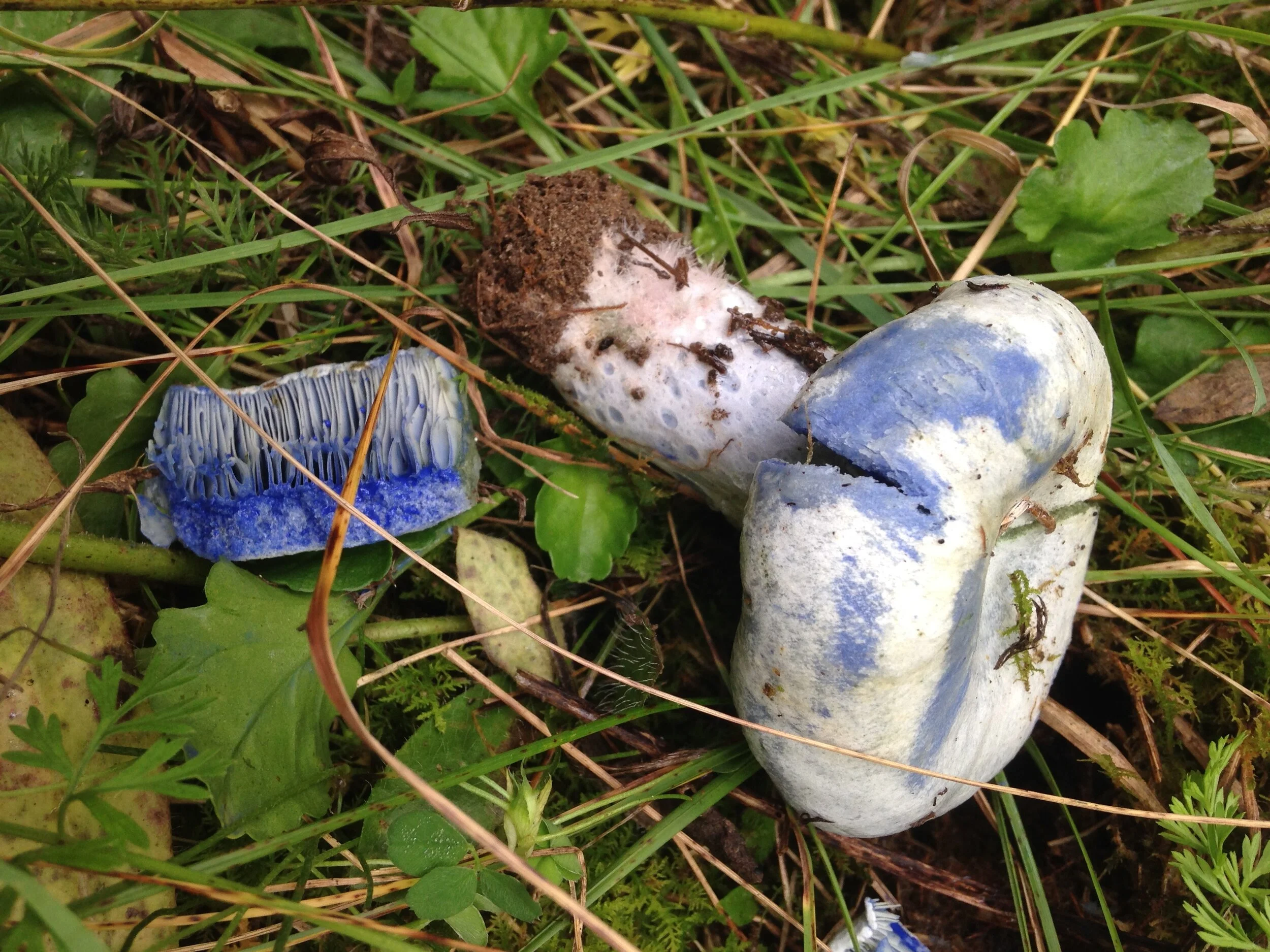Who are you? Fungal Edition
Found at Grey County Managed Woodland, Hamilton line and Concession rd. 8. Oct. 10, 2020
There are many beautiful things in the forest. The Red Elderberry (Sambucus racemosa) buds, swollen reddish green and waiting to burst. The yellowing leaves of the Crack Willow (Salix fragilis) growing along the river bank. The black and white of the White Breasted Nuthatch (Sitta carolinensis), making their way down the browny red of the Eastern White Cedar (Thuja occidentalis) bark.
But rarely do we get to see such a stand out beauty as the Blue Cup Fungus (Chlorociboria aeruginascens). This vibrant bluey green (or is it greeny blue) punches out against the rich browns, greens, reds and yellows littering the forest floor in the fall. I can be hiking pretty quickly (as quick as a naturalist can hike) and I will stop midstep, just to examine these common little cup fungi hanging out on the ends of old decaying logs.
I don't remember the first time I noticed them, but I do remember the cool bluey stain they leave in the wood they occupy. This “stain” is actually the mycellium running throughout the wood as they break down the rotting trees. I have read that the Blue Cup Fungus can be found on hardwoods and softwoods, though when I find the fungi in the woods, I can't tell yet what kinds of wood they inhabit. I have also read that most folks find the stained wood more commonly than they find the fruiting bodies, but I feel like I see the apothecia (“disk or cup shaped fruiting body”) pretty often. I’ll have to keep track now which I see most.
Blue Stain Fungus, found in well developed Maple (Acer sp.) forest, littered with Large-tooth Aspen, Common Buckthorn (Rhamnus cathartica) and Bur Oak (Quercus macrocapa), Oct. 14, 2020.
The brilliant blue apothecia only appear after extended wet periods, usually in summer and fall, which makes sense because often the rotting log pieces I find are wet, but the stain is persistant all year. A very similar species, C. aeruginosa, can only be told apart from the C. aeruginascens by microscopic differences, so I don't think I'll worry too much if I mix them up.
The scientific name Chlorociboria aeruginascens translated from the Latin roots breaks down to “aerug-” meaning "blue-green" and “ascens” means "becoming" so the specific epithet “aeruginascens” could translate to "becoming green."
This fungi is Saprobic, meaning they inhabit old dead wood on which they tend to feed. So you aren't going to see this fungi on a living tree, but instead on the decomposing pieces on the ground. Turns out this species isn't quite the kind of fungi which breaks down the wood, but instead occupys already rotting wood which other fungi have already begun breaking down. This is an essential ecosystem service. Decomposing dead materials, restoring nutrients to the soil, breaking down trees facilitating the creation of microhabitats are necessary for life to flourish. Death makes life possible and enables more to grow. The possible outcomes of losing decomposers like Chlorociboria would be horrible, typified by disease and the dead piling up and the eventual depletion of soil quality. But for now, we have these wonderful fungi, who assist in the nutrient cycling necessary for sustaining life. What a task for such a small life form.
Lactarius indigo found at Hockley Valley Provincial Park, Sept. 5, 2020
This Blue Milky Cap (Lactarius indigo) was found at the base of some Eastern White Pines (Pinus strobus) in a transitional zone (sounds fancy) between a forby field of Asters (Family: Asteraceae) and Goldenrods (Solidago sp.). I was struck again by the blue hue of the broken flesh and had to look more.
When we got down to look it didn't smell to distinctive, as some Mushrooms do, but smelled, like a Mushroom in the dirt. The cap was about 9cm (3") across if I remember correctly, though I didn’t measure it in the field. This particular Blue Milky Cap was within about 3 m (10’) of another, both growing in the soil and needle litter from the White Pines above them. The spores are a light creamy yellow in colour. The stalk is often pitted, with little dimples.
One of my books, Mushrooms of Ontario and Eastern Canada, by George Brarron, describes the cap as being convex, becoming flat and then depressed, and many sources describe the blue turning to grey in time.
The gills were bluer at broken fleshy ends and the stalk seemed to only hint at the blue. The gills were decurrent, but the books say the gills may be attached - decurrent (gills might in attached to the stalk in a gradient between these two forms).
Image from Mushrooms of Ontario and Eastern Canada, by George Brarron, Partners Publishing, 2014
Folks write about the milky latex oozing from the damaged flesh, but I didn’t see much oozing. Maybe I could have waited longer, or looked closer, but that would have been a site for sure.
I sometimes get to thinking when I find some beautiful Mushroom or Plant, or Insect, that they must be super rare because if I havn’t noticed the beauty before, than there must just not be many of them around. Really though, I am just not paying as much attention as I could be. The Blue Milky Cap is described as “widespread but not common”.
The books explain that it is edible, with a peppery or bitter taste, though I have never tried it. Maybe next time.




Now writing this entry has got me all wiggly for more Mushroom ID, so much so that I went out and found some more Mushrooms… but I think I will have to save those for another post some other time.
Thanks for reading!




